 As UHN's monthly research newsletter, NRx reports on the full spectrum of research from UHN's five research institutes: the Princess Margaret (PM) Cancer Centre, the Toronto General Research Institute (TGRI), the Toronto Western Research Institute (TWRI), the Toronto Rehabilitation Institute (TRI) and the Techna Institute (Techna).
As UHN's monthly research newsletter, NRx reports on the full spectrum of research from UHN's five research institutes: the Princess Margaret (PM) Cancer Centre, the Toronto General Research Institute (TGRI), the Toronto Western Research Institute (TWRI), the Toronto Rehabilitation Institute (TRI) and the Techna Institute (Techna).
In this issue you can read about:
- A new clinical trial to improve breast cancer treatment
- Cutting-edge infrastructure funded by CFI
- A technique that starts with stem cells and produces cartilage
- How in-hospital strokes compare to those experienced elsewhere
- Using a lung cancer classification system to customize treatment
- Genome Canada funding for transformational research projects
We hope that you will find NRx informative. If you have feedback or questions, please contact www@uhnresearch.ca.
Christopher J. Paige, PhD, FCAHS
Vice President, Research
University Health Network
Radiation therapy provided no benefit for women over age 60 on hormone therapy with luminal A subtype breast cancer
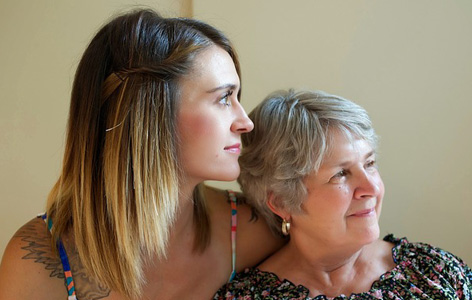
The least aggressive breast cancer subtype (luminal A) occurs in women of all ages, but is more prevalent in older women.
Previous studies have shown that radiation therapy is of overall benefit for women after breast conserving surgery. However, the degree of benefit depends on various factors, including the aggressiveness of the cancer and the age of patient. This has led to the idea that, for some women, radiation therapy may be unnecessary.
To explore this idea, PM Senior Scientist and Clinician Dr. Fei-Fei Liu and Clinician Researcher Dr. Anthony Fyles analysed breast cancer samples from women on hormone therapy (tamoxifen). Half of these women were treated with radiation therapy, while the other half received no radiation. Molecular analyses were then conducted on their breast cancer samples to categorize them into four major breast cancer subtypes. The results revealed that women with the least aggressive subtype — known as luminal A breast cancer— benefitted the least from radiation therapy.
When the researchers only considered women over age 60 with luminal A subtype, they found that radiation therapy showed no benefit. For these women, only 1.3% experienced a recurrence without radiation therapy versus 5.0% when radiation therapy was administered.
These findings have led to the launch of a new clinical trial, sponsored by the Ontario Clinical Oncology Group, that will enroll 500 participants across Canada over three years. Dr. Fyles comments, "These results could lead to changes in clinical practice that would help minimize unnecessary treatment and side effects in up to a quarter of all women with breast cancer, and save as much as $3 million dollars annually for the province of Ontario. Post-menopausal women aged 55 or older with small node negative breast cancer who are interested in participating in the new trial should ask their treating physician if they are eligible for this study."
Supported by the Canadian Institutes of Health Research, the Giovanni And Concetta Guglietti Family Foundation, The Princess Margaret Cancer Foundation, the Campbell Family Institute for Cancer Research, and the Ontario Ministry of Health and Long-Term Care.
Identification of a Low-Risk luminal A breast cancer cohort that may not benefit from breast radiotherapy. Liu FF, Shi W, Done SJ, Miller N, Pintilie M, Voduc D, Nielsen TO, Nofech-Mozes S, Chang MC, Whelan TJ, Weir LM, Olivotto IA, McCready DR, Fyles AW. Journal of Clinical Oncology. 2015 May 11. [Pubmed abstract]
Five cutting-edge UHN facilities to be supported through new CFI funding
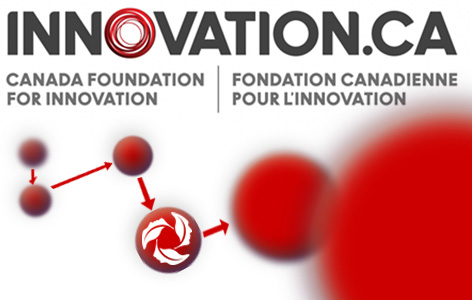
On May 29, 2015, the Honourable Ed Holder, Minister of State (Science and Technology) announced that a total of $333 million will be invested into research infrastructure across Canada.
The funds were provided by the Canada Foundation for Innovation (CFI) through its Innovation Fund program—a competitive award that supports research facilities and equipment that are essential for positioning Canada as a world leader in innovative research.
Gilles Patry, President and CEO of CFI explains, "In today's highly competitive research environment, the nation's researchers need access to the best tools and facilities that will make them stand out." UHN was awarded $8.82 million to help build and enhance the following state-of-the-art facilities and capabilities:
- DriverLab (to advance the design of safer vehicles for older and at-risk drivers; led by Dr. Geoff Fernie)
- Centre for Islet Research and Therapeutics (to advance regenerative therapeutics for diabetes; led by Drs. Herbert Gaisano and Mark Cattral)
- Image-guided Discovery Laboratory (to advance integrated systems-level imaging, quantitative imaging, image-guided interventions and dynamic, feedback-driven medicine; led by Dr. David Jaffray)
- Proteomics, structural biology and optical microimaging capabilities for multi-dimensional tumour phenotype analysis (to advance customized cancer therapies; led by Dr. Benjamin Neel)
- Organ Repair Laboratory (to improve the quality and increase the availability of donor lungs and livers; led by Dr. Shaf Keshavjee)
Dr. Christopher Paige, Vice President, Research, UHN, comments, "CFI investments will further strengthen the innovation ecosystem that exists at UHN—an ecosystem that combines world-class patient care with cutting-edge resources and training across the full spectrum of research."
UHN researchers find a way to produce functional cartilage tissue using a method that begins with stem cells

A key feature of osteoarthritis (the most common form of arthritis) is the breakdown of articular cartilage in hand, knee and leg joints.
A study by PM Senior Scientist and McEwen Centre Director Dr. Gordon Keller has demonstrated a new method to produce cells, known as chondrocytes, that are capable of making cartilage.
While other studies have described the successful differentiation of stem cells into certain types of chondrocytes, Dr. Keller's study is the first to reveal the molecular pathways required to generate chondrocytes that can make the type of cartilage found in joints (known as articular cartilage) in a laboratory dish.
The results, published in Nature Biotechnology, showed that a particular molecular pathway, known as the TGFß signalling pathway, is involved in the process to create chondrocytes. The resulting chondrocytes were able to generate and maintain the cartilage in an experimental model for up to 12 weeks.
"This is an exciting and encouraging first step towards producing functional tissue for joint repair," says Dr. Keller. "Working with our partners at Mount Sinai Hospital, the Arthritis Program at Toronto Western Hospital and the University of Guelph, we are proceeding to transplant the stem cell-derived tissue into laboratory models to test its ability to repair damaged cartilage."
You can watch Dr. Keller discuss the possible implications of this work on a recent CTV News interview by clicking here.
This work was supported by Rob and Cheryl McEwen, the McEwen Centre for Regenerative Medicine, the Canadian Institutes of Health Research, the Krembil Foundation, Michael and Yetta Bregman in collaboration with the Campaign to Cure Arthritis, the Toronto General & Western Hospital Foundation, and The Princess Margaret Cancer Foundation. G Keller holds a Tier I Canada Research Chair in Embryonic Stem Cell Biology. Image courtesy of Stock Up.
Generation of articular chondrocytes from human pluripotent stem cells. Craft AM, Rockel JS, Nartiss Y, Kandel RA, Alman BA, Keller GM. Nature Biotechnology. 2015 May 11. [Pubmed abstract]
People who have in-hospital strokes experience fewer fatalities, but are more likely to have severe strokes, longer hospital stays and increased disability
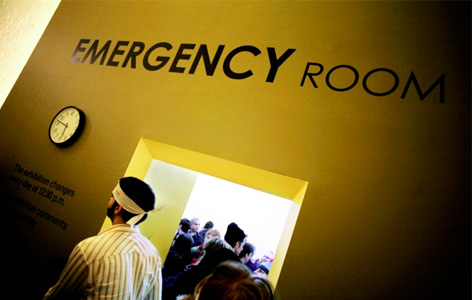
A common stroke medication dissolves blood clots; the treatment must be administered within hours of the stroke.
It is estimated that 4 to 17 percent of strokes occur while people are already hospitalized for other reasons. Because these people are already receiving care, there is an opportunity for rapid treatment; however, little is known about the outcomes of those who experience in-hospital strokes.
To address this issue, Dr. Moira Kapral (TGRI Senior Scientist) and Dr. Alexandra Saltman (UHN medical resident) used data from the Ontario Stroke Registry to examine the care and outcomes of almost 30,000 stroke patients across the province. While the team found that there were fewer fatalities amongst people who experienced an in-hospital stroke after adjusting for various factors, they also found that these people were more likely to experience more severe strokes, longer hospital stays and greater levels of disability.
One possible explanation for this could be that those who experienced in-hospital strokes had more health problems at the outset; as such, standard stroke treatments were often hindered by existing health complications. For example, certain stroke medications cannot be used when a patient is recovering from surgery.
Dr. Kapral states, "Although we cannot comment on the specific reasons for the different outcomes of in-hospital stroke patients, our study reinforces the need to develop standardized approaches for recognizing and managing strokes within the hospital setting."
This work was supported by the Canadian Stroke Network, the Heart and Stroke Foundation of Ontario, and the Toronto General & Western Hospital Foundation. Image from Thierry Geoffroy (Wikimedia Commons).
Care and outcomes of patients with in-hospital stroke. Saltman AP, Silver FL, Fang J, Stamplecoski M, Kapral MK. JAMA Neurology. 2015 May 4. [Pubmed abstract]
New WHO classification system for lung cancer used by researchers to identify people that may benefit from chemotherapy
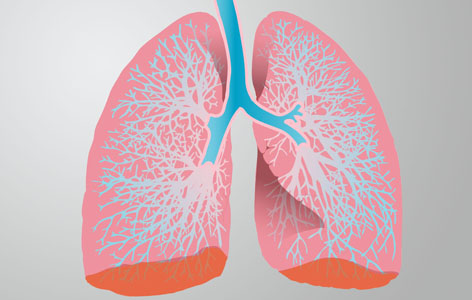
Adenocarcinomas are cancers that can form in mucus-secreting glands. In the lung, these account for 40% of all lung cancers.
Lung adenocarcinoma is the most common form of lung cancer in Canada. Early forms of this cancer can be treated with surgery. Several clinical trials have shown that, in some patients, post-operative chemotherapy increases the likelihood of curing the cancer; however, researchers are unable to identify which patients would benefit from the more intense treatment plan.
The World Health Organization (WHO) has recently published a new classification system that categorizes lung adenocarcinoma into one of five subtypes, based on the appearance of the cancerous tissue viewed under a microscope. Using this system, an international team lead by PM Lung Pathologist and Senior Scientist Dr. Ming-Sound Tsao has shown that patients diagnosed with one of two subtypes of lung adenocarcinoma may live longer if they receive chemotherapy after their cancer is surgically removed.
The research team collected cancerous lung tissues that had been surgically removed from 575 patients who participated in lung cancer clinical trials. They examined the tissues under a microscope and classified each patient's cancer as one of the five subtypes. They determined that two subtypes, known as 'micropapillary' and 'solid', were the most aggressive and were associated with poorer survival rates. Importantly, the team found that surgery followed by chemotherapy improved cancer survival rates for patients with these two subtypes.
"Although these findings need to be further validated in prospective clinical trials, they could help doctors prescribe better treatments to each patient and improve their chance of being cured," says Dr. Tsao.
This work was supported by la Ligue contre le cancer (France), le Programme National d'Excellence Spécialisé Cancer du Poumon de l'Institut National du Cancer (France), the National Cancer Institute (USA), the Canadian Cancer Society, Sanofi, the Goustave Roussy Foundation, the European Union's Seventh Framework Programme for Research and The Princess Margaret Cancer Foundation.
Subtype classification of lung adenocarcinoma predicts benefit from adjuvant chemotherapy in patients undergoing complete resection. Tsao MS, Marguet S, Le Teuff G, Lantuejoul S, Shepherd FA, Seymour L, Kratzke R, Graziano SL, Popper HH, Rosell R, Douillard JY, Le-Chevalier T, Pignon JP, Soria JC, Brambilla EM. Journal of Clinical Oncology. 2015 Apr 27. [Pubmed abstract]
$12 million in funding announced for transformational genomic research at UHN
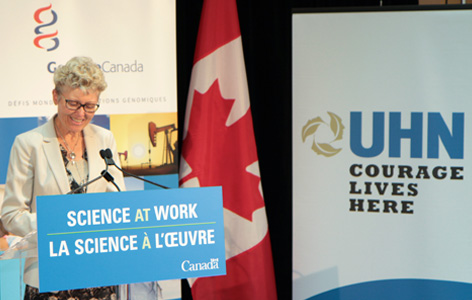
Dr. Suzanne Kamel-Reid spoke at the Genome Canada announcement at Princess Margaret Cancer Centre on June 5, 2015.
UHN researchers Dr. Suzanne Kamel-Reid (PM Cancer Centre) and Dr. Shaf Keshavjee (TGRI Senior Scientist) have been collectively awarded $12 million from Genome Canada and industry partners. The two successfully funded projects, which represent half of all awards granted nationally, will leverage cutting-edge genomic technologies to improve patient outcomes.
Dr. Kamel-Reid will partner with LifeLabs Medical Laboratory Services to develop a national framework for the large-scale genomic analysis of tumours. While tumour profiling is an important step towards better customizing cancer treatments, it is not yet widely available. To address this, the project aims to develop cloud-based infrastructure for cancer genomic analyses and to make the approach accessible and integrated into routine clinical care. Providing genomic profiling as part of standard care will have tremendous benefit for the approximately 50,000 Canadians diagnosed with cancer each year.
Dr. Keshavjee will partner with Lung Bioengineering Inc., a subsidiary of United Therapeutics Corporation, to develop a genomic-based test for donor lungs. Currently, donor lung tissues are evaluated with physiological assessment alone, which deems less than 15 percent of lungs acceptable for transplantation. Using more detailed genomic approaches to perform such evaluation may increase the number of transplant-acceptable lungs to nearly 50 percent—providing more people with access to healthy donor lungs.
The awards are administered through Genome Canada's Genomic Applications Partnership Program, a program dedicated to promoting the use of genomic technologies to create social and economic benefits for Canadians.
 TGRI Senior Scientist Dr.
TGRI Senior Scientist Dr.  TRI Senior Scientist Dr.
TRI Senior Scientist Dr.  TRI Senior Scientist Dr.
TRI Senior Scientist Dr.  Susanna Sellmann, Manager of the Clinical Trial Support Unit at PM, was elected to serve as 2015-16 President Elect for the Society of Clinical Research Associates (SOCRA). The role will enable her to guide the development the organization, which aims to improve global health through advancing professional development and knowledge translation within the field of clinical research. Susanna has contributed to clinical research at UHN since 2003 through her expertise in quality management, assurance, good manufacturing practices and quality auditing.
Susanna Sellmann, Manager of the Clinical Trial Support Unit at PM, was elected to serve as 2015-16 President Elect for the Society of Clinical Research Associates (SOCRA). The role will enable her to guide the development the organization, which aims to improve global health through advancing professional development and knowledge translation within the field of clinical research. Susanna has contributed to clinical research at UHN since 2003 through her expertise in quality management, assurance, good manufacturing practices and quality auditing.